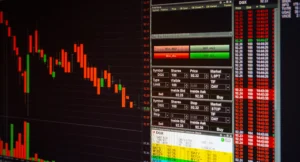Fakeouts have become a major challenge for traders in today’s fast-paced markets. Every trader faces that frustrating moment when a breakout looks real, only to reverse and wipe out trades. This experience is so common that new terms like “price action fakeout” and “indicator-based fakeout detection” are now mainstream in trading circles. As trading strategies become more advanced, so do false breakout signals. The real question for 2025 is: which method actually gives you the edge? Is it a pure price action fakeout approach, or is it modern indicator-based fakeout detection?
This article compares both methods, shows real examples, and gives you a complete roadmap to develop a breakout trading strategy that can survive the trickiest markets. You will see how price action patterns play a central role in spotting fakeouts and why indicator-based fakeout detection is both a blessing and a trap for modern traders.
Price Action Fakeout: The Core Concept
A price action fakeout happens when price briefly breaks an important level like support, resistance, or a trendline, and then quickly reverses direction. Many traders get trapped on the wrong side. The reason this price action fakeout occurs so often is due to market psychology and the actions of big players. For example, when a major resistance breaks, retail traders rush in, but smart money might reverse the move. Recognising these price action fakeout moves gives you a significant edge.
Spotting these events depends on reading price action patterns. Patterns such as pin bars, inside bars, and engulfing candles often signal a potential fakeout. For example, imagine a price spike above a key resistance that forms a bearish pin bar. That’s often the start of a price action fakeout. When you know how to read these patterns, you’re less likely to fall for false breakout signals.
Price action fakeouts are most powerful when combined with context.
For instance:
- Volume spikes confirm or deny the move’s strength.
- Look for price action patterns near major news releases or market opens.
- Study how the fakeout aligns with the overall trend direction.
A classic price action fakeout might look like this:
- The EURUSD breaks above 1.1000 on a big candle.
- In the next 30 minutes, the price forms a bearish engulfing candle.
- The move reverses hard, trapping breakout traders and rewarding those who saw the price action fakeout.
Indicator-Based Fakeout Detection: Promise and Pitfalls
Indicator-based fakeout detection is the most popular alternative to price action fakeout analysis. Indicators add objectivity and give traders set rules for trading fakeouts. You might use tools like RSI, Bollinger Bands, or moving averages to confirm whether a breakout is real. The challenge is that indicators often lag behind price. This creates a unique problem where false breakout signals are confirmed only after losses pile up.
For example, you might see a breakout on the chart and then wait for the RSI to leave the overbought zone before acting. By then, the price action fakeout has already played out, and you miss the trade or get caught too late. Some traders use volume indicators to validate breakouts. If a breakout happens on low volume, it is likely a price action fakeout, not a true breakout trading strategy.
Despite their drawbacks, indicators are not useless. When used with price action patterns, they create a powerful filter for false breakout signals. Consider the combination of a moving average crossover with a bullish engulfing candle. If both happen at a key support level, the odds of a price action fakeout drop.
Key points for using indicator-based fakeout detection:
- Do not rely on a single indicator. Combine at least two for confirmation.
- Always compare indicator signals to current price action patterns.
- Avoid overloading your charts with indicators, as it creates confusion.
Why False Breakout Signals Trap Traders
False breakout signals are a trader’s worst enemy. They appear real and convincing at first glance. The typical scenario involves price breaking a strong level, causing a surge in breakout trading strategy activity. Suddenly, the price reverses, leaving breakout traders at a loss. This trap happens in every market—forex, stocks, crypto, and commodities.
The reason false breakout signals are so deadly is that they feed off emotion. Retail traders see the breakout and fear missing out. At the same time, smart money is hunting for liquidity beyond those levels. This is why studying price action patterns can give you an edge.
Real-life example:
- GBPUSD breaks above 1.2800, triggering long entries.
- Minutes later, a sharp bearish engulfing candle forms.
- The move reverses, trapping everyone who chased the breakout.
Price action fakeout events are common during major news events, where volatility is high and price jumps across levels. Indicator-based fakeout detection helps filter out many false breakout signals by confirming with momentum or volume. Still, the most reliable filter is your ability to read price action patterns and understand market psychology.
Building a Breakout Trading Strategy: Mixing Art and Science
The strongest breakout trading strategy blends both price action fakeout recognition and indicator-based fakeout detection. No single method works all the time. The real winner in 2025 is the trader who adapts and combines both worlds.
Start by analysing price action patterns around major levels:
- Identify support, resistance, and trendlines.
- Wait for clear price action patterns like pin bars or inside bars.
- Watch for volume confirmation as the breakout occurs.
Now, bring in indicators to filter out the noise:
- Use RSI to check for overbought or oversold conditions.
- Look for divergence between price and momentum indicators.
- Check Bollinger Bands for volatility spikes.
For example, you see a bullish breakout on USDJPY with high volume, but RSI shows bearish divergence. This could be a classic price action fakeout, confirmed by both price and indicator-based fakeout detection.
Checklist for every breakout trade:
- Does the breakout occur after a strong trend or during a range?
- Are there price action patterns suggesting exhaustion or reversal?
- Do indicators confirm or conflict with the breakout direction?
- Are false breakout signals more likely in current market conditions?
Common Price Action Patterns That Signal Fakeouts
Understanding price action patterns is crucial for anyone wanting to master price action fakeout detection. Here are the most effective ones:
- Pin Bar: A long wick and small body, showing a sharp rejection of higher or lower prices. Appearing at resistance or support, it often marks a price action fakeout.
- Engulfing Candle: When one candle fully engulfs the previous one, it signals a possible reversal and a potential price action fakeout.
- Inside Bar: A candle completely inside the previous one, representing market indecision. Its breakout direction often fakes out traders before reversing.
- False Breakout Bar: A candle that pierces a level and closes back inside the range. This is a classic price action fakeout, warning traders to stay alert.
You will see these price action patterns across all timeframes, but they are most reliable at daily or four-hour intervals. Combining them with indicator-based fakeout detection increases your chances of avoiding false breakout signals.
Examples: Price Action Fakeout vs. Indicator Detection in Action
Let’s compare how price action fakeout and indicator-based fakeout detection perform in real-world trades.
Example 1:
A trader spots a bullish breakout above resistance on EURUSD. A pin bar forms right after, signalling a price action fakeout. The trader ignores the breakout and waits. Soon, RSI and MACD both indicate bearish momentum, confirming the fakeout. By waiting, the trader avoids a false breakout signal.
Example 2:
On USDJPY, the price consolidates near support. Suddenly, a strong bullish candle breaks support. However, the move occurs with declining volume, and an inside bar forms. This is a textbook price action fakeout, confirmed by volume indicators. The trader waits for confirmation from a moving average crossover before entering short, following the breakout trading strategy with discipline.
Example 3:
GBPUSD trades in a range. The price spikes above resistance with a strong move, but Bollinger Bands show the market is overstretched. Simultaneously, a bearish engulfing candle appears. This combination of price action patterns and indicator-based fakeout detection suggests a false breakout signal. The trader stays out or takes a reversal trade.
Smart Use of Indicators: Best Practices for 2025
While price action fakeout skills are essential, smart use of indicators sets apart the top traders. Avoid common mistakes:
- Do not chase every breakout; wait for confirmation from both price action patterns and indicator-based fakeout detection.
- Limit the number of indicators. Use only those that truly add value to your breakout trading strategy.
- Focus on leading indicators like volume and momentum, which can confirm or deny the price action fakeout.
Adapt your approach based on the market environment:
- In trending markets, price action fakeout events are less common, but indicators can alert you to potential reversals.
- During consolidations, false breakout signals multiply. Here, price action patterns combined with indicator confirmation save you from losses.
Remember, the goal is not to predict every fakeout but to develop a system that catches most of them and manages risk well.
Why Combining Both Methods Wins in 2025
Modern markets require modern solutions. In 2025, the best breakout trading strategy combines price action fakeout detection with selective use of indicators. Neither method works alone every time. Together, they provide a full view of the market.
Advantages of this combined approach:
- Higher probability of catching real moves, not false breakout signals.
- Less stress and more confidence in every trade.
- Clear entry and exit rules based on both price action patterns and indicator-based fakeout detection.
Top traders constantly refine their skills in spotting price action fakeout events and keep up with new indicator technologies. Many now use AI-powered tools to scan for price action patterns and confirm fakeouts automatically, increasing their odds in volatile markets.
Final Thoughts: Action Steps for Your Next Trade
If you want to improve your breakout trading strategy in 2025, start by learning price action fakeout signals inside and out. Study real-world examples, spot price action patterns, and watch for volume confirmation. Use indicator-based fakeout detection to filter your entries, but never rely on indicators alone. The most successful traders blend both methods for a clear edge.
Next time you see a breakout, ask yourself:
- Is there a classic price action pattern warning me?
- Are indicators confirming or denying the breakout?
- Could this be a price action fakeout designed to trap me?
Answer these questions, and you will avoid most false breakout signals and trade with confidence.
Remember: The real winner is not price action fakeout or indicator-based fakeout detection alone. The real winner is the trader who uses both with skill and discipline.
Now, it’s your turn. Start spotting those fakeouts and let the market work for you.
Read here to learn more about “Daily vs. Weekly Forex Trading Plans: Find Your Trading Style“.

I’m Chaitali Sethi — a seasoned financial writer and strategist specializing in Forex trading, market behavior, and trader psychology. With a deep understanding of global markets and economic trends, I simplify complex financial concepts into clear, actionable insights that empower traders at every level. Whether it’s dissecting winning strategies, breaking down market sentiment, or helping traders build the right mindset, my content bridges the gap between information and implementation.

